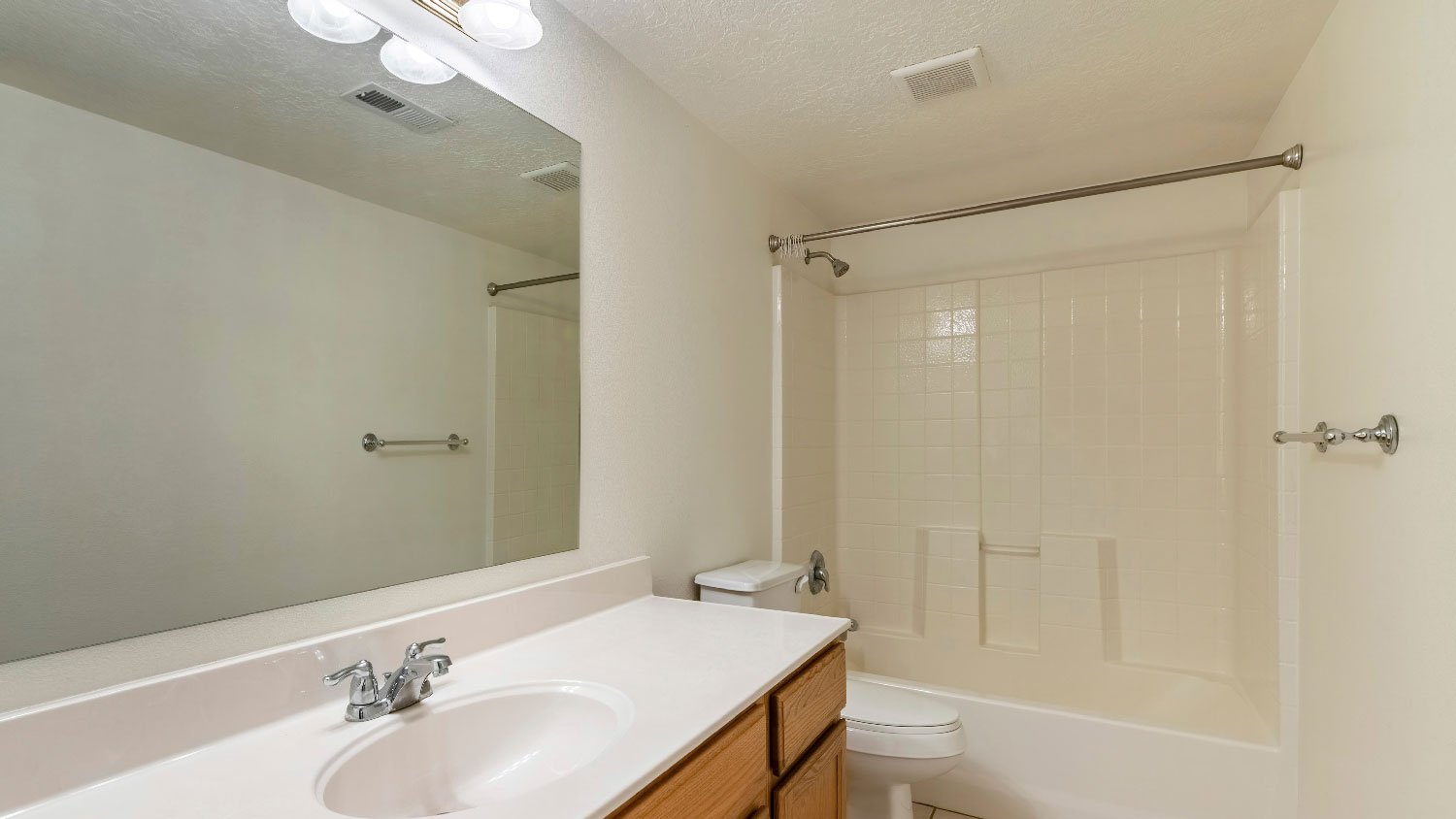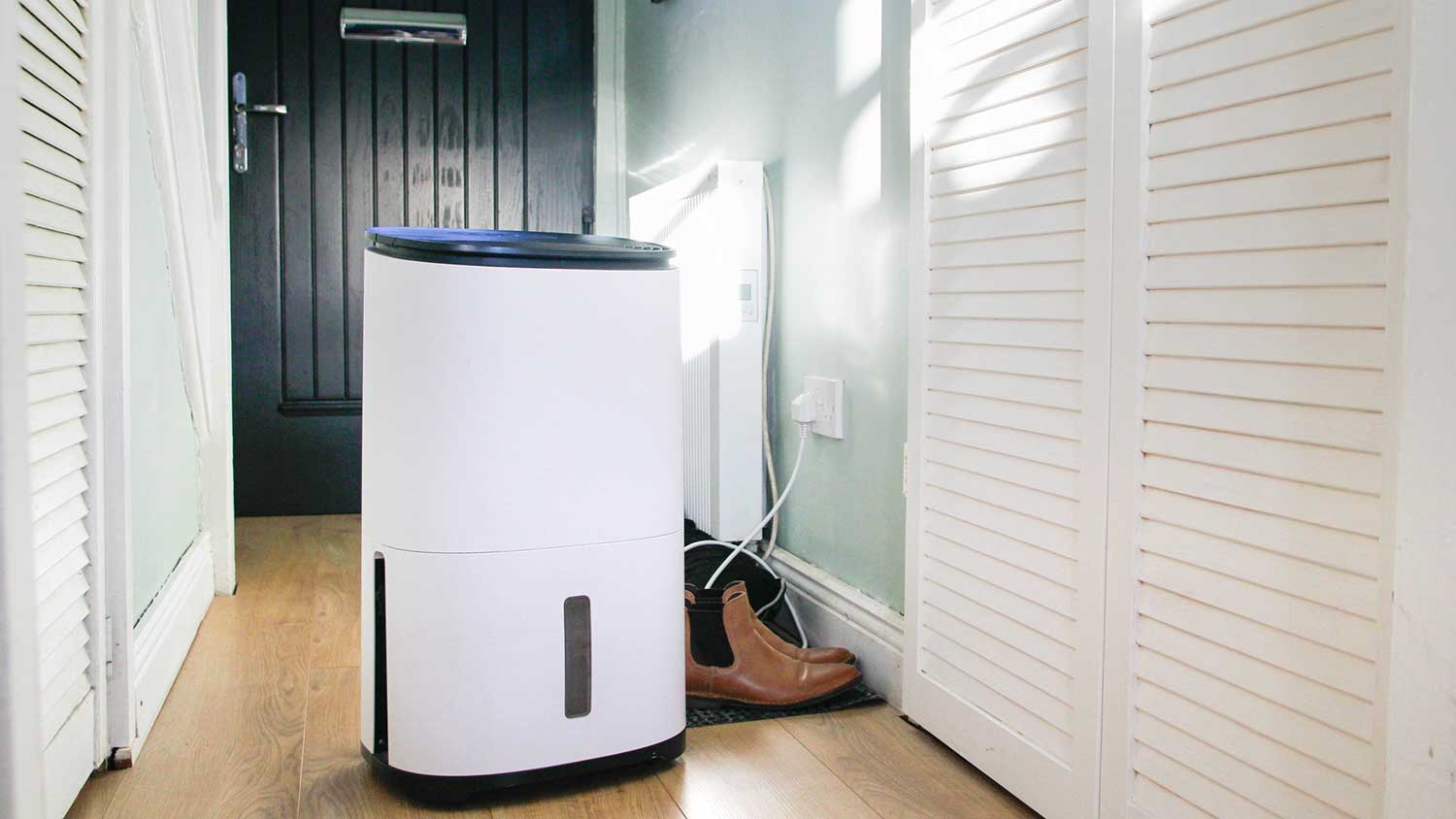What Is an Exhaust Fan? Here's Everything You Need to Know
Improving indoor air quality one fan blade at a time


Exhaust fans are most commonly used in bathrooms and kitchens.
The primary purpose of exhaust fans is to maintain proper indoor air quality.
In some cases, exhaust fan use can offer environmental benefits.
Invisible yet indispensable, exhaust fans are unsung heroes in our homes, quietly ensuring the air we breathe is fresh and healthy. Whether found in kitchens, bathrooms, or even concealed within attic spaces, exhaust fans play a crucial role in maintaining indoor air quality and protecting living environments. Read on for an in-depth explanation of what an exhaust fan is, and learn how it contributes to the comfort, health, and energy efficiency of your home.
What Is an Exhaust Fan?
An exhaust fan is a mechanical ventilation device designed to remove stale air, moisture, odors, and airborne pollutants from an enclosed area. It operates by drawing in indoor air and expelling it outdoors or into a designated exhaust system, helping to improve air quality, regulate temperature and humidity, and prevent the buildup of harmful substances. Its use is essential for maintaining a healthy and comfortable indoor environment.
The Importance of Exhaust Fans
To ensure a healthy and comfortable living environment, you need exhaust fans in your home. Removing moisture from high-humidity areas like kitchens and bathrooms prevents the growth of mold and mildew, which can cause structural damage and pose health risks to you, your family, and visitors. Exhaust fans are also adept at eliminating cooking odors, smoke, and airborne grease particles, improving indoor air quality and reducing indoor pollutants. This creates a pleasant and hygienic atmosphere within the home.
Energy efficiency is also a key benefit of exhaust fans. Attic exhaust fans, for instance, regulate temperature by expelling excess heat from the attic space, reducing the workload on air conditioning systems and decreasing energy consumption. Functioning exhaust fans in all areas of the home help control moisture, which can prolong the life span of building materials and lower the risk of structural damage.
Types of Exhaust Fans by Room

Exhaust fans are beneficial for many different areas throughout homes, each boasting their own valuable properties.
Bathroom: Exhaust fans are most commonly associated with bathrooms, working to remove moisture (from all those toasty showers), odors, and pollutants from the air. This helps prevent mold and mildew growth and improves indoor air quality.
Kitchen: Another common home exhaust fan is the kitchen range hood. These are used to remove cooking odors, smoke, and grease particles from the air.
Garage: These exhaust fans are used to remove fumes, odors, and pollutants from the garage space to help prevent the spread of toxic gasses into the home and improve air quality in the garage.
Attic: A bit more uncommon, you may be wondering, “What is an attic exhaust fan?” These fans function a bit differently by helping to reduce cooling costs in hot climates. Similar to other exhaust fan uses, attic fans also regulate the temperature and humidity to prevent moisture buildup, mold, and heat-related issues.
Crawl space: For homes without full basements, exhaust fans work in crawl spaces for similar reasons as their use in attics.
Basement: Usually installed as ceiling-mounted exhaust fans, basements require fans to help remove stale air and moisture.
Laundry room: Similar to basements, laundry rooms often have poor ventilation and benefit from ceiling-mounted exhaust fans to maintain better indoor air quality.
Whole-house: Designed to exchange indoor air with outdoor air, whole-house ventilation systems help to improve indoor air quality. They can include exhaust fans and fresh air intake systems. Whole-house fan costs range between $900 and $2,500 on average.
Exhaust Fan Maintenance
Maintaining your exhaust fans is essential to ensure they function efficiently and effectively. Proper maintenance not only prolongs the life span of these devices but also contributes to better indoor air quality and energy efficiency. The frequency of maintenance depends on factors such as the type of fan, usage patterns, and environmental conditions. It's essential to refer to the manufacturer's instructions for specific maintenance guidelines and to establish a regular maintenance schedule to ensure your exhaust fans operate at their best.
Cleaning
Regular cleaning is a fundamental aspect of exhaust fan maintenance. Dust, dirt, and debris can accumulate on the fan blades and housing, impeding airflow and reducing performance. Depending on the fan type, you may need to remove the grille or disassemble the fan for thorough cleaning. A vacuum cleaner or a damp cloth can help remove accumulated dirt and particles. Pay special attention to the blades, which are critical for moving air effectively.
Filter Replacement
In some exhaust fans, particularly those in kitchen range hoods, filters play a critical role in trapping grease and airborne particles. These filters should be regularly cleaned or replaced per the manufacturer's recommendations to ensure the fan's continued efficiency. Clogged or dirty filters can restrict airflow and reduce the fan's ability to remove pollutants from the air.
Lubrication
If your exhaust fan has a motor that requires lubrication, it's crucial to keep it well-oiled. This helps maintain smooth and quiet operation. Refer to the manufacturer's guidelines for the type of oil to use and the recommended maintenance schedule.
Check Fasteners and Wiring
Periodically inspect the fan assembly for loose screws, nuts, and bolts. Tighten them as needed to prevent vibrations and noise. Inspect the wiring and electrical connections to ensure they are secure and free from damage. Faulty wiring or connections can pose safety hazards and hinder the fan's operation.
Safety Checks
If your exhaust fan is located in areas prone to hazards, like garages or near combustible materials, ensure it remains unobstructed and free from grease or flammable debris that could pose a fire risk.
Inspect Ductwork
Examine the exhaust ductwork connected to the fan for any obstructions, damage, or leaks. Ensure the ducts are properly sealed to prevent energy loss and ensure efficient ventilation. This might be a better task for a duct pro.
Professional Maintenance
For more complex or hard-to-reach exhaust fans or if you are unsure about maintenance tasks, consider hiring a professional duct installer to service and maintain your exhaust fans. The cost will vary based on the services required. For example, air duct cleaning costs between $270 and $500 on average.
Exhaust Fans vs. Ventilation Fans
Exhaust fans are ideal for removing cooking odors and humid or stale air from bathrooms and kitchens, ultimately helping to avoid mold growth and foul smells. Conversely, ventilation fans circulate fresh air throughout your home, balancing airflow while boosting indoor air quality.
Simply put, exhaust fans are all about air removal, and ventilation fans ensure continuous air exchange. Deciding what's best for you depends on your specific needs.
How Much Does It Cost to Install an Exhaust Fan?
Homeowners can expect the cost of an exhaust fan installation for a bathroom to range from $240 to $565, depending on the fan type, installation complexity, and any necessary ductwork. More powerful or feature-rich models may push costs higher.
The average installation cost for a kitchen range hood with an exhaust fan is around $1,750, though prices can range from $650 to $2,500 based on the hood style, ventilation setup, and labor requirements. High-end or custom installations will be on the higher end of the spectrum.
DIY vs. Hiring a Pro
Whether you should install an exhaust fan DIY or hire a professional depends on the job's complexity.
For a bathroom exhaust fan, experienced DIYers comfortable with electrical work and minor duct modifications can complete the project. However, if new wiring or venting through the roof or an exterior wall is required, a professional ensures proper installation and prevents issues like leaks or inadequate ventilation.
Hire a pro for a kitchen range hood with an exhaust fan because these installations require electrical and ductwork. Some projects also require modifications to existing cabinetry or walls. Remember, no matter the project, hiring a pro saves time and reduces the risk of costly mistakes.
Frequently Asked Questions
Not all exhaust fans need venting, but most do. Bathroom fans and range hoods work best when vented outside to remove moisture, odors, and pollutants. Some ductless range hoods use filters instead, but they don’t remove air—just recirculate it. Proper venting ensures better air quality and efficiency.
Leaving an exhaust fan on constantly isn’t ideal. While it helps remove moisture and odors, continuous use will lead to wear and tear, higher energy costs, and even fire risks if the motor overheats. Bathroom fans should run for 20 to 30 minutes after a shower, while kitchen exhaust fans should be used only when cooking or clearing air.
Exhaust fans push air out of spaces, removing moisture, heat, odors, and pollutants. They vent air outside through ducts, preventing mold and improving air quality. Unlike ventilation fans, which circulate fresh air in and out, exhaust fans focus solely on expelling unwanted indoor air.





- Furnace Repair
- Air Conditioning Repair
- HVAC Repairs
- Furnace Installation
- Wood & Pellet Stove Repair
- Dehumidifier & Humidifier Repair
- Heat Pump Companies
- Swamp Cooler Repair
- Wood Stove Services
- HVAC Companies
- Commercial A/C Repair
- Geothermal Installation
- Air Conditioning Installation
- Boiler Repair
- 24 Hour Furnace Repair
- Geothermal Repair
- Heat Pump Repair
- Humidifier Installation
- Thermostat Repair
- Thermostat Installation
- Nest Installation
- Heating & Cooling
- Heating Repair
- Furnace Cleaning
- Furnace Tune-Up
- HVAC Technicians
- Subcontractors
- Furnace Maintenance
- Plumbing & Heating Companies
- Wood Stove Inspection
- Mini Split Installation
- Wall Heater Repair
- Duct Installers
- Here’s Who to Hire to Install Your Bathroom Exhaust Fan
- Bathroom Fan Leaking Water? Common Causes and What to Do
- 7 ‘Cool’ Tips for Keeping Rooms Cool With Fans
- Why Is My Range Hood Dripping Water? Who to Call to Fix?
- Do Ductless Bathroom Fans Remove Moisture?
- How to Fix a Noisy Ceiling Fan Once and for All
- Should You Install a Fan or an Air Conditioner? Here’s How to Decide
- 11 Home Heating Mistakes You Didn't Know Were Costing You
- Troubleshooting 6 Common Ceiling Fan Problems
- Which Ceiling Fan Direction Is Best for Summer and Winter?










